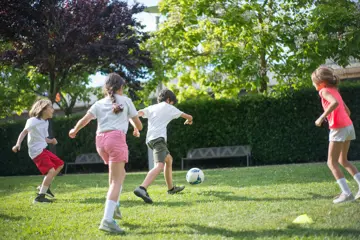Everyone is an individual, and there's no one definitive sign that someone is autistic. While children and young people exhibit autism in different ways, it can be helpful to be aware of the core characteristics of autism.
Everyone is an individual, and there's no one definitive sign that someone is autistic. While children and young people exhibit autism in different ways, it can be helpful to be aware of the core characteristics of autism.

Autistic children and young people can find it difficult to interpret both verbal and non-verbal communication, such as tone of voice, hand gestures, facial expressions, humour, and emotions. They may also struggle to communicate, including having limited or delayed speech, or using made-up words. Autism specialists often suggest using visual supports as a way of communicating clearly with autistic children and young people, and speaking slowly, to give them time to process.

Many autistic young people struggle to interact with others in a way that follows 'social rules'. They can easily misinterpret another person’s feelings, meaning or intentions and can appear insensitive during conversations (for example, by not taking turns to speak, or by being more direct than people might expect). They may seek time alone and become ‘overloaded’ by social situations, or may talk at length about their own interests, without asking other people questions.

As autistic young people can find new situations stressful and overwhelming, they sometimes enjoy a set daily routine. This helps them avoid unpredictable scenarios in which they can become confused and anxious.

Many autistic young people develop highly-focused interests from a young age – examples might be music, animals, or a particular colour. The interest may be unusual, and this can cause problems at school or make it difficult for them to make friends. As with repetitive behaviour, young people often become fixated on a particular subject because that’s what makes them the happiest and most comfortable.

Autistic young people may experience sensory sensitivity to taste, touch, sounds, light, colour or pain. The most common type of over-sensitivity is sound, in which background noises become overwhelming. Whatever they become sensitive to, it’s important to avoid this where possible as continued exposure can cause anxiety or, in some cases, physical pain. Some children and young people may wear ear defenders in certain situations for this reason. Sensory differences and processing can affect young people with hypersensitivity to all manner of things, such as light (and the type of light), the feel of certain textures (including grass, fabric, and foods) loud noise and some young people and young people can even exhibit high thresholds to pain.

You can read more about the signs that a child might be autistic, and find a wide range of information and advice, on the National Autistic Society website.